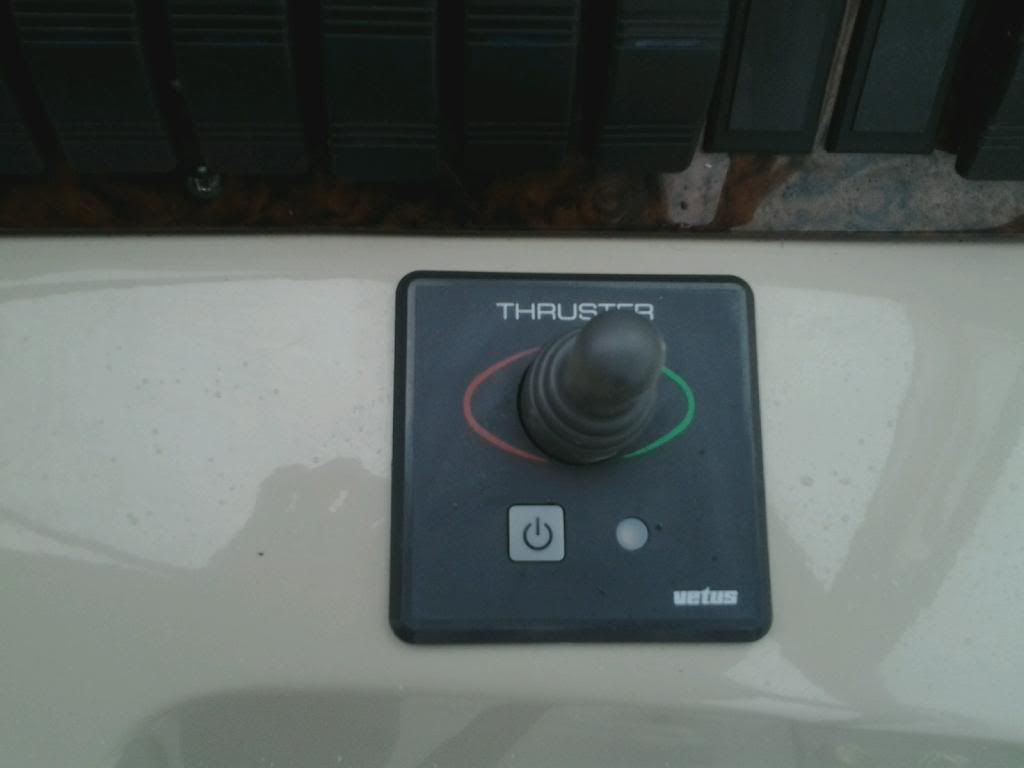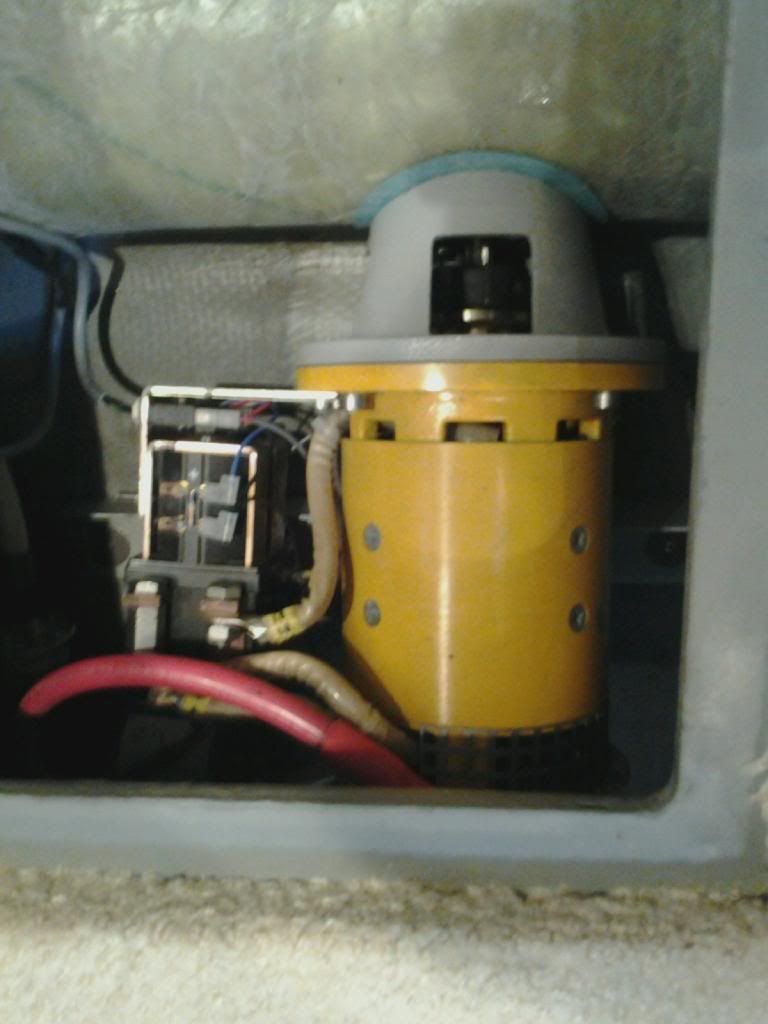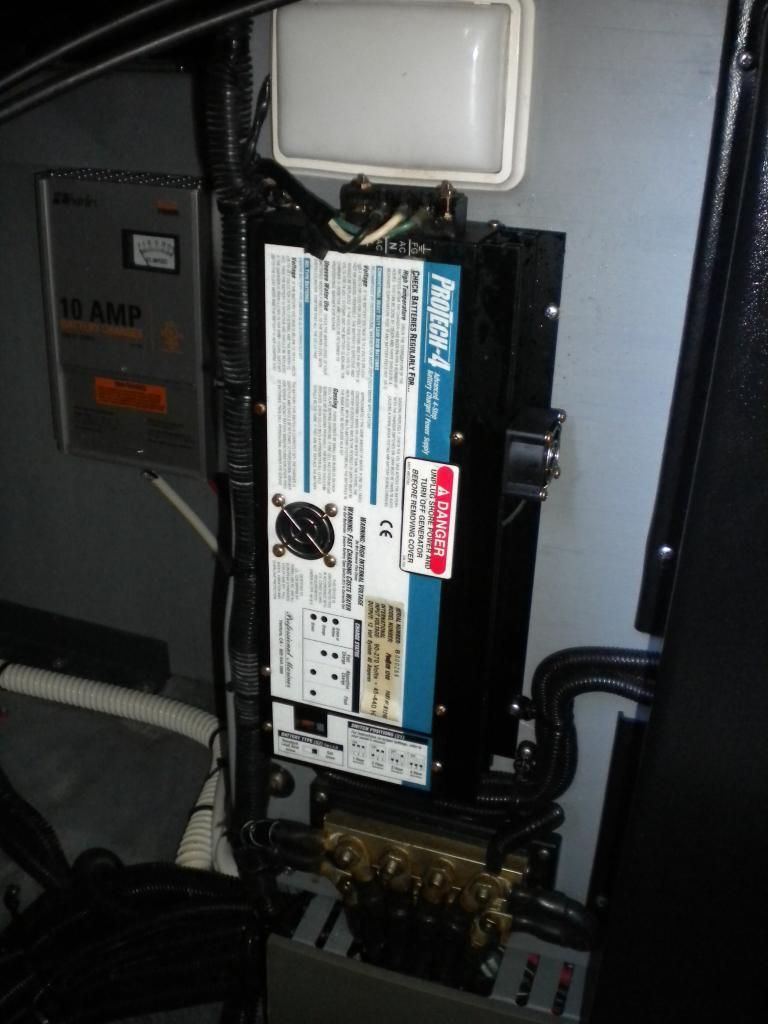rondds
Well-Known Member
- Oct 3, 2006
- 8,859
- Boat Info
- 2001 380DA
- Engines
- Merc 8.1s (2008)...Hurth ZF 63 V-drives...WB 7.0 BCGD (2013), Garmin 8208 & 740 MFDs, GMR 24xHD dome
I have a Vetus BOW-9524 7" Bow Thruster which has functioned flawlessly since I purchased this boat in April of 2013. I don't use it all that often so periodically I'll give a couple of quick bursts at the dock. Today I tried this and nothing happened. The joystick LED illuminates and beeps, but nothing happens when the joystick is moved. There is 25volts at the batteries and at the terminals on the motor (see the heavy cable marked B-1 below). Read the manual - there are two fuses - one in line with the red battery cable which leads to the motor. That is not blown. Another 5amp one (similar to the ones in a car) in the side of the motor, which is also intact. There is no clicking, no relays, no sound what-so-ever from the motor. I spun the shaft from inside the boat and it is freely movable.
It worked 2 weeks ago.
The round light to right corner comes on, blinks and beeps when the button to the left is pressed...

25v at the heavy beige cables...

Something is wired into the harness (see black electrical tape) that plugs in to the left below. Not sure what that is...

It worked 2 weeks ago.
The round light to right corner comes on, blinks and beeps when the button to the left is pressed...

25v at the heavy beige cables...

Something is wired into the harness (see black electrical tape) that plugs in to the left below. Not sure what that is...

Last edited:



